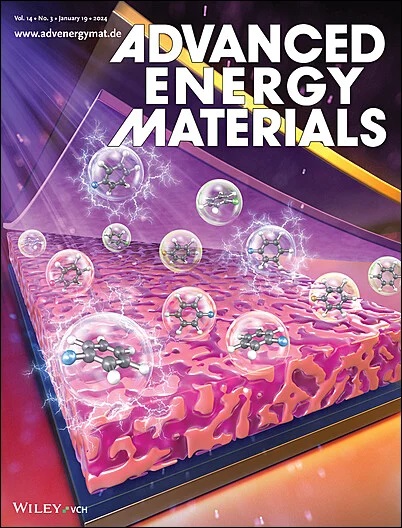利用固体核磁共振技术了解NMC阴极直接回收过程中结构和成分的演变
IF 24.4
1区 材料科学
Q1 CHEMISTRY, PHYSICAL
引用次数: 0
摘要
回收报废锂离子电池(lib)以回收LiNixMnyCozO2 (NMC)等高价值正极材料是由经济、地缘政治和可持续性需求驱动的。最近,人们对直接回收方法产生了兴趣,以提高材料的效率和回收率,包括离子热、水热、固态或氧化还原介质方法。结合回收工艺的发展,详细的结构表征是必要的,以了解阴极回收步骤的机制和功效。固体核磁共振(NMR)波谱是一种独特的工具,可以探测锂配位,体和表面环境,以及回收和升级利用的NMC阴极中的过渡金属有序。本文利用6、7Li、1H和19F核磁共振波谱来探测NMC直接回收过程中每一步可能形成的结构和组成变化以及表面杂质。在还原过程中,观察到Li重新插入到NMC晶格中。在升级回收过程中,其目标是增加NMC中的Ni含量,观察到富Ni相与大块Li环境的结合。加工过程中形成的表面杂质也被鉴定出来。这些研究为优化回收过程提供了有价值的信息,以达到目标阴极成分和结构,从而使电化学性能与原始材料相当或更好。本文章由计算机程序翻译,如有差异,请以英文原文为准。

Understanding Structural and Compositional Evolution during NMC Cathode Direct Recycling via Solid-State NMR
Recycling end-of-life lithium-ion batteries (LIBs) to recover high-value cathode materials such as LiNixMnyCozO2 (NMC) is driven by economical, geopolitical, and sustainability needs. There has been recent interest in direct recycling methods to improve efficiency and recovery of materials, including ionothermal, hydothermal, solid-state, or redox mediator methods. In conjunction with recycling process development, detailed structural characterization is necessary in order to understand the mechanisms and efficacy of cathode recycling steps. Solid-state nuclear magnetic resonance (NMR) spectroscopy is a unique tool that can probe Li coordination, bulk and surface environments, and transition metal ordering in recycled and upcycled NMC cathodes. Here, 6,7Li, 1H, and 19F NMR spectroscopy to probe structural and compositional changes as well as surface impurities that may form during each step in NMC direct recycling is utilized. During relithiation, Li reinsertion into the NMC lattice is observed. During upcycling, where the goal is to increase the Ni content in the NMC, incorporation of Ni-rich phases into the bulk Li environment is observed. Surface impurities formed during processing were also identified. These studies provide valuable information for optimizing recycling processes to reach targeted cathode composition and structure that can enable electrochemical performance comparable to or better than pristine materials.
求助全文
通过发布文献求助,成功后即可免费获取论文全文。
去求助
来源期刊

Advanced Energy Materials
CHEMISTRY, PHYSICAL-ENERGY & FUELS
CiteScore
41.90
自引率
4.00%
发文量
889
审稿时长
1.4 months
期刊介绍:
Established in 2011, Advanced Energy Materials is an international, interdisciplinary, English-language journal that focuses on materials used in energy harvesting, conversion, and storage. It is regarded as a top-quality journal alongside Advanced Materials, Advanced Functional Materials, and Small.
With a 2022 Impact Factor of 27.8, Advanced Energy Materials is considered a prime source for the best energy-related research. The journal covers a wide range of topics in energy-related research, including organic and inorganic photovoltaics, batteries and supercapacitors, fuel cells, hydrogen generation and storage, thermoelectrics, water splitting and photocatalysis, solar fuels and thermosolar power, magnetocalorics, and piezoelectronics.
The readership of Advanced Energy Materials includes materials scientists, chemists, physicists, and engineers in both academia and industry. The journal is indexed in various databases and collections, such as Advanced Technologies & Aerospace Database, FIZ Karlsruhe, INSPEC (IET), Science Citation Index Expanded, Technology Collection, and Web of Science, among others.
 求助内容:
求助内容: 应助结果提醒方式:
应助结果提醒方式:


